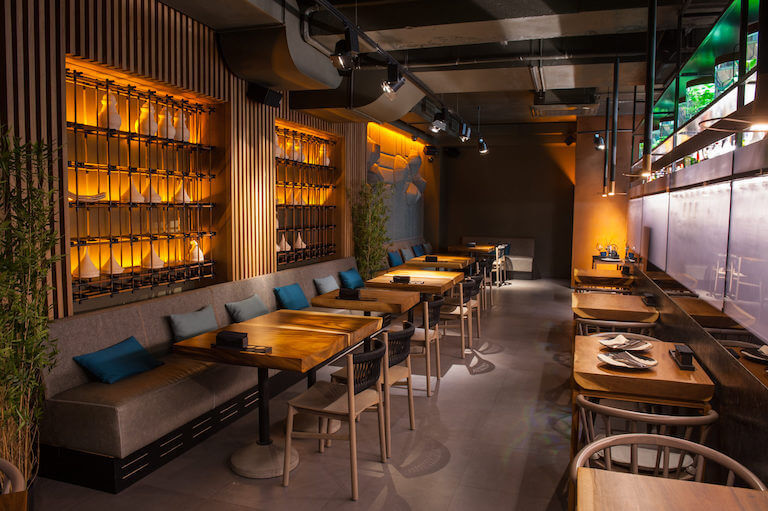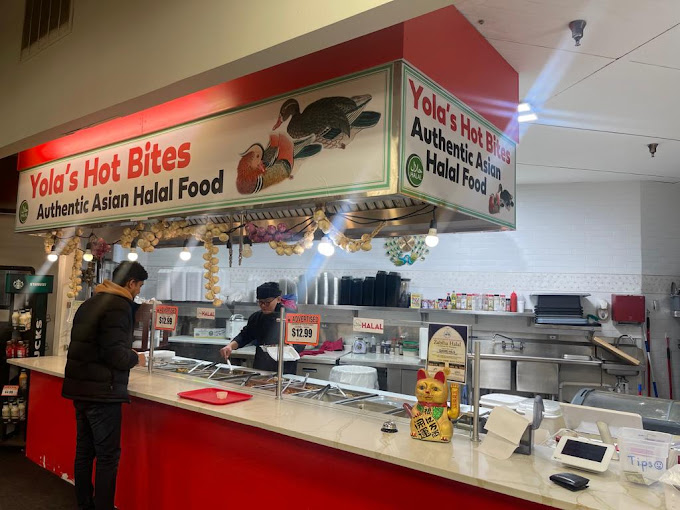Savor Authentic Asian Food With a Pan-Asian Twist for a Culinary Journey
Embarking on a culinary journey via authentic Eastern cuisine, boosted with a Pan-Asian twist, offers a special chance to explore the abundant tapestry of flavors that specify the region's diverse cooking customs. As you consider these attracting recipes, take into consideration the social narratives and historic influences that shape them, each bite offering a story waiting to be found. Instagrammable restaurants Islamabad.

Checking Out Pan-Asian Flavors
In the realm of worldwide gastronomy, Pan-Asian food attracts attention for its remarkable variety and the unified interplay of tastes from various Oriental societies. This culinary technique celebrates the unique components and abundant practices discovered across the continent, developing a tapestry of preferences that is both rewarding and interesting. Secret to Pan-Asian cuisine is its capability to balance contrasting tastes-- pleasant, salty, spicy, and sour-- while highlighting the freshness and top quality of each ingredient.
From the umami-rich soy sauce of Japan to the intense chili peppers of Thailand, Pan-Asian cuisine provides a comprehensive scheme of flavors. These aspects are often combined in creative methods, boosting dishes with layers of complexity. As an example, the use of great smelling natural herbs such as lemongrass and cilantro, common in Vietnamese and Thai cuisine, adds a rejuvenating brightness to recipes, while the consolidation of coconut milk supplies a luscious, rich appearance.
The focus on fresh produce and aromatic seasonings makes sure that each dish is not only a feast for the preference buds but additionally for the senses. Pan-Asian cuisine invites diners to start a culinary trip, checking out the vast and varied landscapes of Oriental gastronomy with every bite.
Fusion Dishes to Try
While Pan-Asian cuisine is celebrated for its traditional tastes, the contemporary cooking landscape is increasingly accepting blend meals that blend these timeless aspects with influences from other regions. This ingenious method not only honors the rich heritage of Asian cookeries yet also presents unique preference experiences that appeal to contemporary tastes buds.
An archetype of such a fusion meal is the Korean-Mexican taco, where marinated bulgogi beef is wrapped in a cozy tortilla, covered with kimchi and a zesty gochujang-infused salsa. This combination weds the vibrant, savory tastes of Korea with the vibrant, fresh aspects of Mexican food. In a similar way, sushi burritos have obtained popularity, integrating the delicate artistry of Japanese sushi with the hearty, hand-held comfort of a burrito, typically featuring fusion ingredients like tempura shrimp and avocado with a drizzle of wasabi mayo.
Another significant recipe is Thai curry ramen, which infuses the luscious, fragrant seasonings of Thai curry right into the soothing brew of standard Japanese ramen, producing an unified blend that tantalizes the detects. These fusion dishes extend beyond simple novelty; they stand for a culinary discussion between societies, urging expedition and development on the planet of Pan-Asian cuisine.
Important Active Ingredients and Spices
To absolutely value Pan-Asian food, one must comprehend the necessary components and spices that form its structure. This diverse culinary design draws from a rich tapestry of Eastern practices, utilizing a harmonious mix of structures and tastes.
Fragrant elements are pivotal, with lemongrass, ginger, and garlic being ubiquitous across various Pan-Asian recipes. These components offer a fragrant base that boosts the complexity of tastes. Flavors such as celebrity anise, cardamom, and cinnamon introduce heat and personality, resembling influences from regions like China and India.

Food Preparation Techniques and Tips
Grasping the art of Pan-Asian cuisine needs familiarity with its unique cooking methods, each contributing to the vibrant tapestry of tastes this cooking custom is commemorated for. Central to these methods is the stir-fry, a quick cooking method that preserves the nutritional integrity and dazzling colors of components. Utilizing a wok, the stir-fry approach permits even warmth circulation, necessary for achieving the particular texture and taste equilibrium of Pan-Asian meals.
An additional fundamental method is steaming, especially common in Chinese food. This gentle approach keeps the natural flavors tapas near me and nutrients of components, making it excellent for seafood and veggies. Dumplings, a cherished staple, usually take advantage of steaming, resulting in soft, delicious structures.
Cooking, likewise indispensable, gives great smoky depths to dishes such as Korean bulgogi or Japanese yakitori (pan asian restaurant Islamabad). This technique often includes official site marinating active ingredients, permitting tastes to penetrate deeply prior to cooking over an open fire or warm plate
Last but not least, grasping the art of balancing flavors-- sweet, sour, salty, bitter, and umami-- is important. Effectively layering these aspects can raise a recipe from average to remarkable, providing a complicated and pleasing culinary experience that symbolizes the significance of Pan-Asian cuisine.
Dining Experiences Worldwide
Around the world, Pan-Asian cuisine provides an unmatched dining experience, celebrated for its rich tapestry of tastes and lively discussions. This culinary phenomenon has actually transcended cultural borders, catching the hearts and tastes of food fanatics worldwide. In worldwide cities fresh York, London, and Sydney, Pan-Asian restaurants offer as fusions where culinary customs from Thailand, Japan, China, and beyond converge, supplying restaurants with a diverse mix of meals that highlight the region's variety.
The worldwide charm of Pan-Asian cuisine depends on its capacity to provide both credibility and technology. Chefs masterfully marry traditional active ingredients such as lemongrass, soy sauce, and miso with contemporary techniques, resulting in meals that are both refreshingly new and acquainted. This fusion allows diners to home start a cooking journey that values heritage while welcoming modernity.
In addition, eating experiences are raised through thoughtfully developed environments that show the ethos of Pan-Asian visual appeals. From minimalist Japanese-inspired insides to lively Thai-themed rooms, each dining establishment provides an unique setting that enhances the culinary offerings. As an outcome, customers are not simply consuming a dish yet partaking in a cultural experience, making Pan-Asian eating an absolutely worldwide phenomenon.
Conclusion
The exploration of Pan-Asian cuisine offers an extensive understanding of the intricate interplay of tastes and culinary practices throughout Asia. By accepting fusion recipes such as Thai curry ramen and sushi burritos, the culinary journey not only highlights the adaptability of traditional ingredients yet additionally showcases cutting-edge modern-day methods. This gastronomic experience, enhanced by cooking techniques and important seasonings, supplies a special opportunity to appreciate the multiculturalism and culinary artistry that specify Pan-Asian cuisine on a global range.
Beginning on a culinary trip with authentic Oriental food, improved with a Pan-Asian twist, uses a distinct opportunity to discover the rich tapestry of tastes that define the area's diverse culinary customs.In the realm of worldwide gastronomy, Pan-Asian food stands out for its exceptional diversity and the unified interplay of flavors from different Asian societies. Key to Pan-Asian food is its ability to stabilize contrasting tastes-- sweet, salted, spicy, and sour-- while highlighting the freshness and top quality of each active ingredient.
